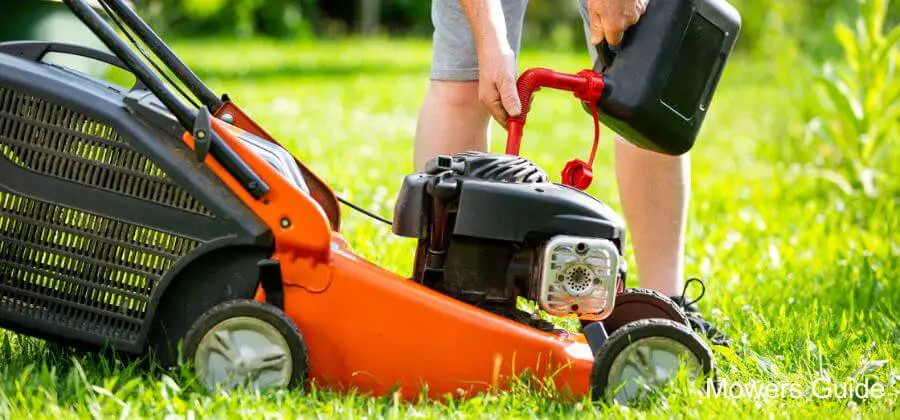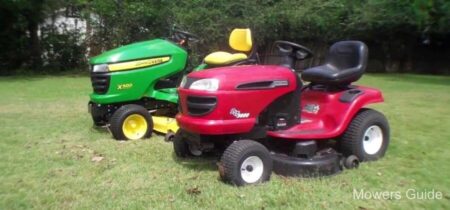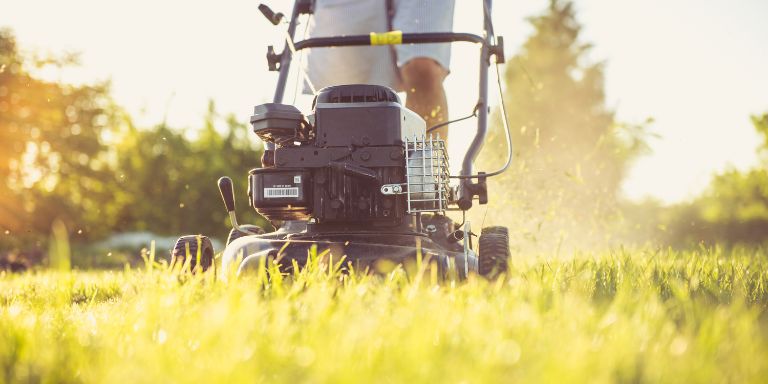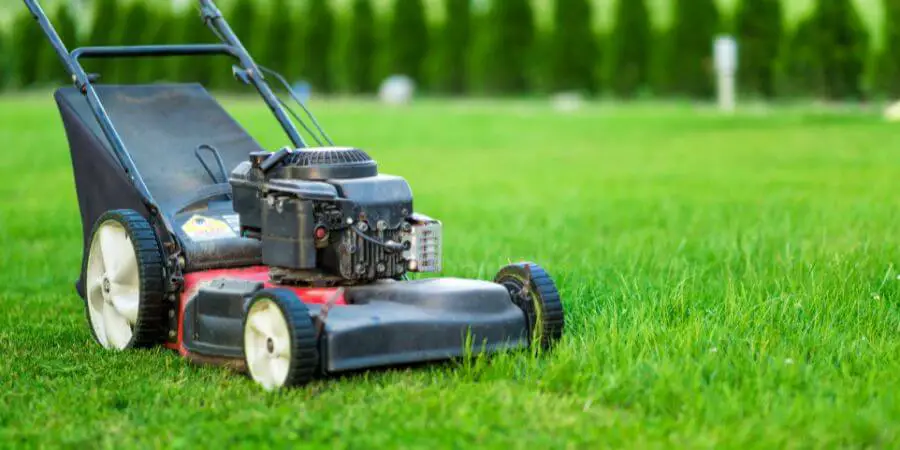Ever wonder just how much gas your lawn mower uses as you work to keep your yard looking pristine? If you’re like most homeowners, you probably don’t think too much about it and just fill up the tank when the mower starts sputtering. But those gallons can add up over the summer. When you stop to do the math, you might be surprised at the lawn mower fuel consumption for the typical yard.
In this article, we’ll explore how much gas different types of mowers need to get the job done. We’ll look at variables like mower size, engine type, and yard conditions that can impact how much fuel is required. You’ll also find some tips for improving your mower’s fuel efficiency, so you can save money at the gas station and do your part for the environment.
By the end of this read, you’ll have a much better sense of your mower’s thirst for gas, so you can budget properly and maybe even reduce its appetite.
Understanding Lawn Mower Fuel Efficiency
Your lawn mower’s fuel efficiency depends on several factors, including the size of your yard, the type of grass you have, and, of course, the mower itself. The average walk-behind mower will burn through about a gallon of gas for every quarter acre of lawn, but a larger riding mower can use 2-3 gallons for the same area.
The specific make and model of your mower also impacts how much fuel it consumes. More powerful mowers with higher horsepower ratings typically require more gas to operate compared to less powerful options. Mowers with larger cutting decks, used to mow bigger yards more efficiently, also usually burn more fuel.
How often you mow plays a role as well. Mowing more frequently, like 2-3 times a week, will use less gas per mowing since you’re only trimming a little growth each time. Mowing less often, such as once a week, consumes more fuel because the mower has to work harder to cut the longer, thicker grass.
Your mowing technique and habits can affect your mower’s fuel usage too. Sharp blades, proper tire pressure, and clearing the underside of your mower deck can help maximize efficiency. Mowing at a consistent speed in overlapping rows, rather than randomly criss-crossing your yard, also optimizes fuel consumption.
With some simple maintenance, the right mower for your needs, and efficient mowing practices, you can lower your fuel costs over the mowing season. Keeping your grass a little longer, around 3 to 3 1/2 inches, can also help. Shorter grass may look nice, but it requires more frequent mowing and, ultimately, more gas.
5 Factors That Impact Lawn Mower Gas Usage
The amount of gas your lawn mower consumes depends on several factors.
Engine Size
The larger the engine, the more fuel it requires. A mower with an engine over 190 cc will use significantly more gas than one under 140 cc. For most medium-sized lawns, a mower with a 140-190-cc engine should work great and be more fuel-efficient.
Blade Size
Larger blades, like those over 21 inches, need more power to spin and therefore burn more fuel. If you have a smaller lawn, consider a mower with a blade under 21 inches, which will use less gas.
Self-Propelled or Pushed
Self-propelled mowers with motorized wheels use more fuel than standard push-reel or rotary mowers. Self-propelled mowers can make mowing easier, but keep in mind they consume up to 20–30% more fuel.
Terrain and Thickness
The more challenging your lawn terrain and the thicker your grass, the harder your mower has to work and the more fuel it burns. Mowing on hilly, uneven ground or through dense, overgrown grass can increase fuel usage by up to 50% compared to mowing on flat, well-maintained grass.
Mowing Frequency
Less frequent mowing means your mower has to work harder to cut more overgrown grass, so it uses more fuel. Mowing once a week or every other week instead of 2-to 3 times a month can improve your fuel efficiency by up to 25%.
By choosing an appropriately sized mower for your lawn and mowing frequently and consistently, you can significantly reduce the amount of fuel your mower needs and save money. Keeping your mower well-maintained and the blade sharp will also help maximize efficiency.
Estimating Fuel Needs Based on Lawn Size
To determine how much fuel your lawn mower needs for your yard, you’ll need to estimate the size of your lawn. The larger your lawn, the more gas your mower will consume.
Measure your Lawn
The most accurate way is to measure your lawn’s square footage. You can do this using a tape measure or by pacing off sections. Measure the length and width of each part of your yard in feet, then multiply the length by the width for each section. Add up the totals of all sections to get your lawn’s square footage.
As a rough estimate, you can also time how long it takes to mow your entire lawn. Most lawnmowers will mow about 1/3 acre in an hour. So if it takes you 3 hours to mow, your lawn is probably around an acre (43,560 square feet).
Fuel Use Estimates
For a typical push reel or rotary mower, you can expect to use:
- 1/2 to 1 gallon of gas per hour for a small lawn (up to 5,000 square feet)
- 1 to 2 gallons of gas per hour for a medium lawn (5,000 to 10,000 square feet)
- 2 to 3 gallons of gas per hour for a large lawn (over 10,000 square feet)
Riding mowers will use 2 to 5 gallons of gas per hour, depending on the size of your mowing deck and the terrain. Hills and thick grass will lower your mower’s fuel efficiency.
It’s a good idea to fill up your mower’s gas tank before each mowing to ensure you have enough fuel to complete the entire job. And for the health of your lawn, never mow more than 1/3 of the grass blade at a time. Following the 1/3 rule will also help maximize your fuel usage.
With some measurements and estimates, you can determine just how much gas your mower needs to keep your lawn looking neat and trim all season long. Be sure to store any leftover fuel properly to avoid it going bad between mowings.
Tips to Improve Your Lawn Mower’s Fuel Economy
To get the most out of every tank of gas for your lawn mower, try these tips to boost its fuel efficiency.
Sharpen the Blades
A sharp mower blade glides through the grass more easily, reducing the engine’s workload. This means it consumes less fuel. Sharpen or replace your mower’s blade at least once a season or if you notice it tearing grass rather than cutting it cleanly.
Adjust the Cutting Height
Raise your mower’s cutting height, especially in hot summer weather. Longer grass blades mean the mower has to cut less, so the engine doesn’t have to work as hard. Start at the highest setting and move to lower settings over subsequent mowings. Find the tallest cutting height that still gives your lawn an acceptable appearance.
Clean the Air Filter
A clogged air filter reduces airflow to the engine, forcing it to work harder and burn more fuel. Remove and clean or replace your mower’s air filter at the start of each mowing season. Check it again mid-season and clean or replace it throughout as needed.
Avoid Mulching
Mulching mower blades require more power to operate, reducing fuel efficiency by up to 20 percent. Only use the mulching feature when necessary to provide nutrients back to your lawn. For routine mowing, remove the mulching plug or blade to improve your gas mileage.
Consolidate Mowing
The more frequently you mow, the more fuel your mower consumes throughout the season. Increase the interval between mowings by one or two days. Your lawn will still look well-maintained, and you’ll make fewer trips to the gas station. Mowing less often is also better for your lawn’s health, as it allows more time to recover between cuts.
Following these useful tips for maximizing your lawn mower’s fuel efficiency can save you money at the gas pump and time refueling while still keeping your lawn looking lush and green all season long. Every small improvement helps, so try incorporating one tip at a time and see how much you can boost your mower’s gas mileage.
When to Refuel Your Gas Lawn Mower?
When it comes to fueling up your gas lawn mower, it’s best not to let the tank get too low before refueling. Running on empty fuel can damage the fuel pump and carburetor. At the same time, overfilling the tank can lead to spills, mess, and wasted fuel. So when should you refuel?
When the Mower Starts Sputtering
If your mower starts sputtering or losing power as you mow the lawn, it’s a sign you’re running low on fuel. Shut off the engine and refuel as soon as possible to avoid engine damage. As a general rule of thumb, if there’s less than 1/4 of a tank of gas left, it’s best to refuel.
After Every 2-3 Mowings
For most average-sized lawns, a typical gas mower will use between 0.5 and 1 gallon of fuel per mowing. So after every 2-3 mowings, check your fuel gauge and refuel if the tank is less than half full. This helps ensure you always have enough gas to finish the job without overfilling the tank.
At the End of the Mowing Season
If possible, try to use up most of the fuel in the mower’s tank at the end of the mowing season. Old or stale gas left sitting in the tank over winter can gum up the carburetor and fuel lines. Either run the mower until the tank is nearly empty or drain the remaining fuel from the tank and carburetor. Refuel with fresh gas in the spring before starting the mower.
Keeping an eye on your mower’s fuel gauge and refueling at the right times will help maximize performance, minimize issues, and ensure your mower is ready when you need it. Maintaining the proper amount of fuel in the tank is one of the easiest ways to keep your lawn mower running strong all season.
Conclusion
All the information you need to figure out how much fuel your lawn mower consumes and ways to improve its efficiency is now yours. The bottom line is that the size of your yard, the power and type of your mower, and your mowing frequency all determine how much gas you need to keep your grass trimmed and tidy each week.
Now that you’re armed with the facts, you can make smart decisions to save money at the pump without sacrificing a pristine lawn. Keep your mower well-maintained, choose an eco-friendly model if it’s time for an upgrade, mow at the optimal height for your grass type, and avoid over-mowing.
FAQs
How can I get the fuel out of my lawnmower?
A liquid hand pump can be used, with one end in the gas can and the other in the fuel tank of the lawnmower. Before doing so, make sure the fuel line is cut off.
Are lawnmowers compatible with vehicle fuel?
The best and most accurate response is to consult the owner’s manual. However, in general, yes. Just be sure the fuel you are using has an appropriate octane level and less than 10% ethanol.
How long does gas stay usable in a lawn mower?
Depending on the formula of the gasoline, it can deteriorate in as little as 30 days. Gasoline treated properly can last up to a year. You have two options to stop this from happening: either empty the gas tank or apply a fuel stabilizer.
How much electricity does a lawn mower use?
The cutting width, motor effectiveness, and grass conditions can all affect the power usage. The typical electricity consumption of corded electric lawnmowers ranges from 0.7 to 1.2 kilowatt-hours (kWh) per hour of use.
For more mower related tips visit here and for more guides related to mowers visit Mowers Guide









